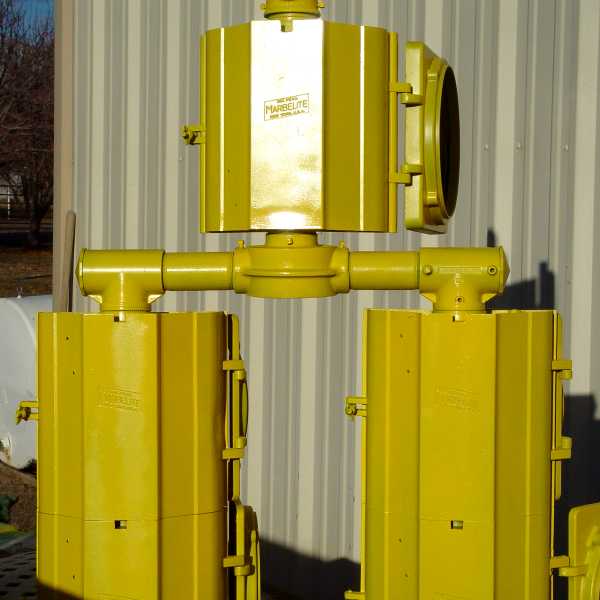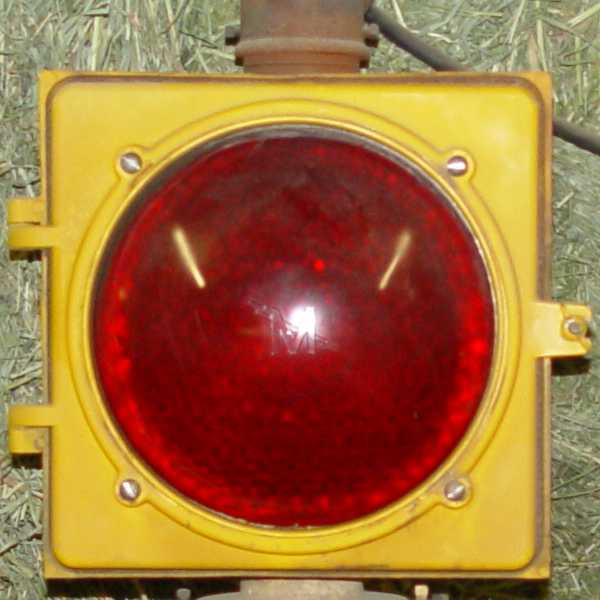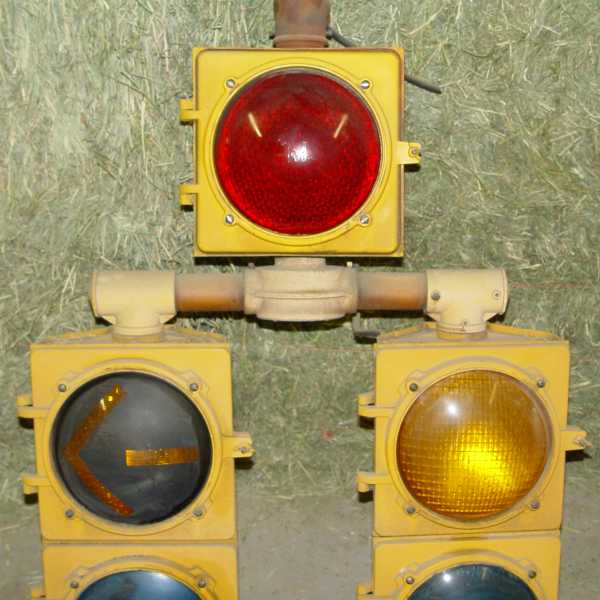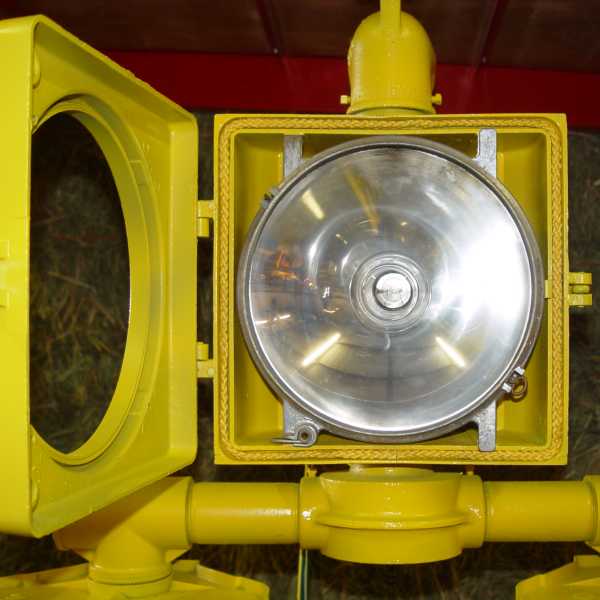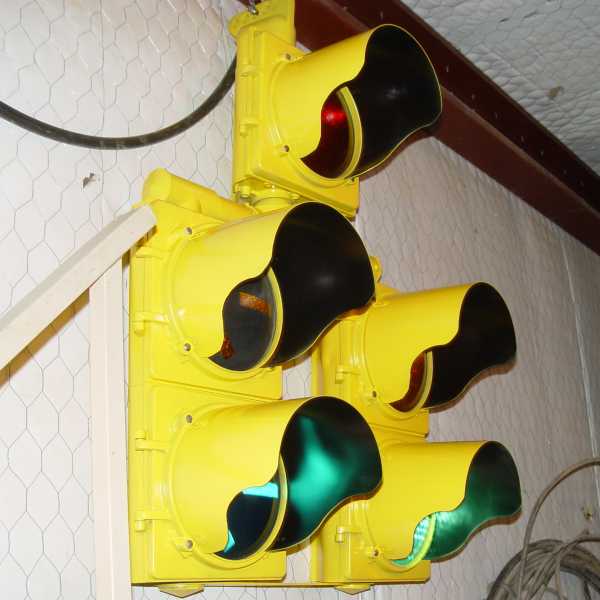Willis Lamm's
|
| Marbelite "Dog House" Signal |
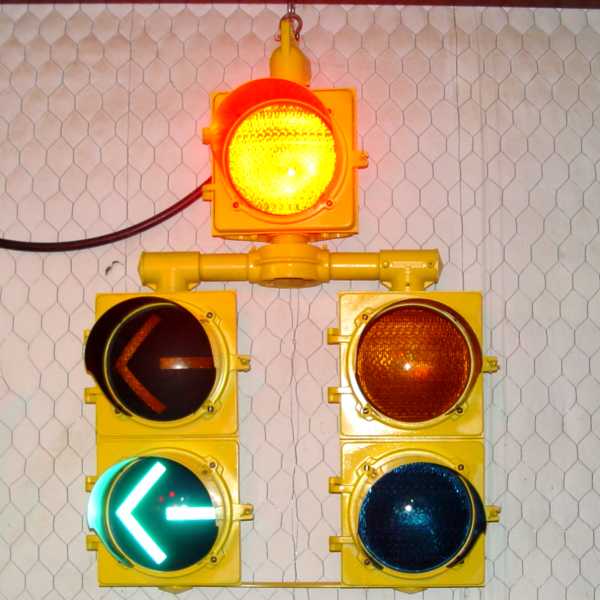
|
"Dog house" is a name applied to signals that had two columns of yellow and green signals below a single red head. Dog houses are most commonly used to indicate protected left turns.

Originally, most protected left turns either involved a separate signal (drivers could only turn left on a green arrow) or a fourth signal section would display a green arrow to indicate when a left turn was protected. In the four section display, the green arrow might overlap a green ball or be a separate display. (See Old Timey Protected Left Turns.) Over time, traffic engineers decided that a yellow display should be added to warn drivers that the protected left turn movement was ending. The addition of a yellow arrow meant that a 5-section signal was required. |
The logo parallelogram on the older head slants up
|
Kopp No.77 "short lightning bolt" lenses.
|
The mounting pads for the visor screws are larger
|
Note the different door thicknesses.
|
The gasket on the older head is in the housing.
|
The gaskets in the newer heads are in the doors.
|
|
Some signal notes:
The ball lenses are all Kopp No. 77 Marbelite issue lenses with the short lightning bolt and outlined "M" logo. The green arrow is a Kopp TL-1710. The yellow lens is a later model General Signals plastic lens, suggesting that the light may have originally been an older style 4-section protected left turn signal that was modified to a dog house configuration and the yellow arrow lens added some time later. Continue to
|
This signal has seven-inch "tunnaway" type
|

